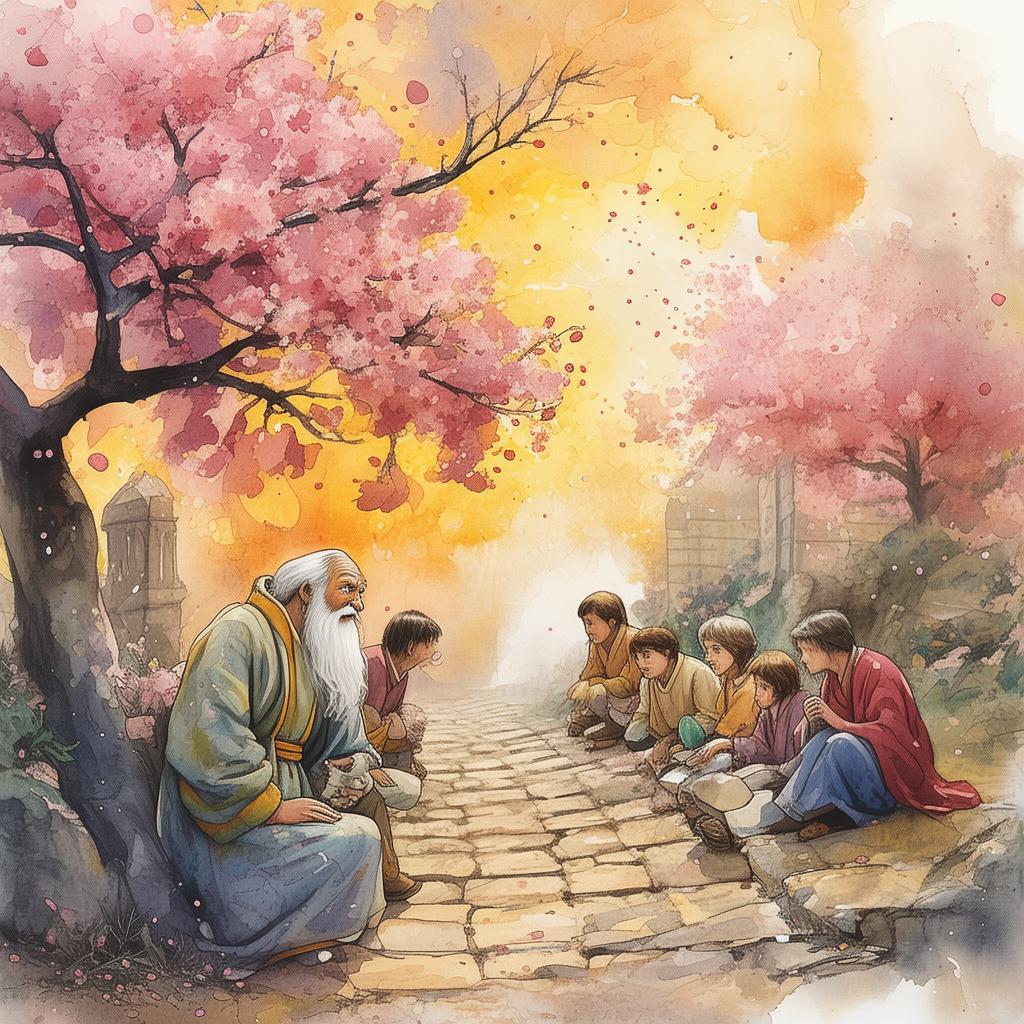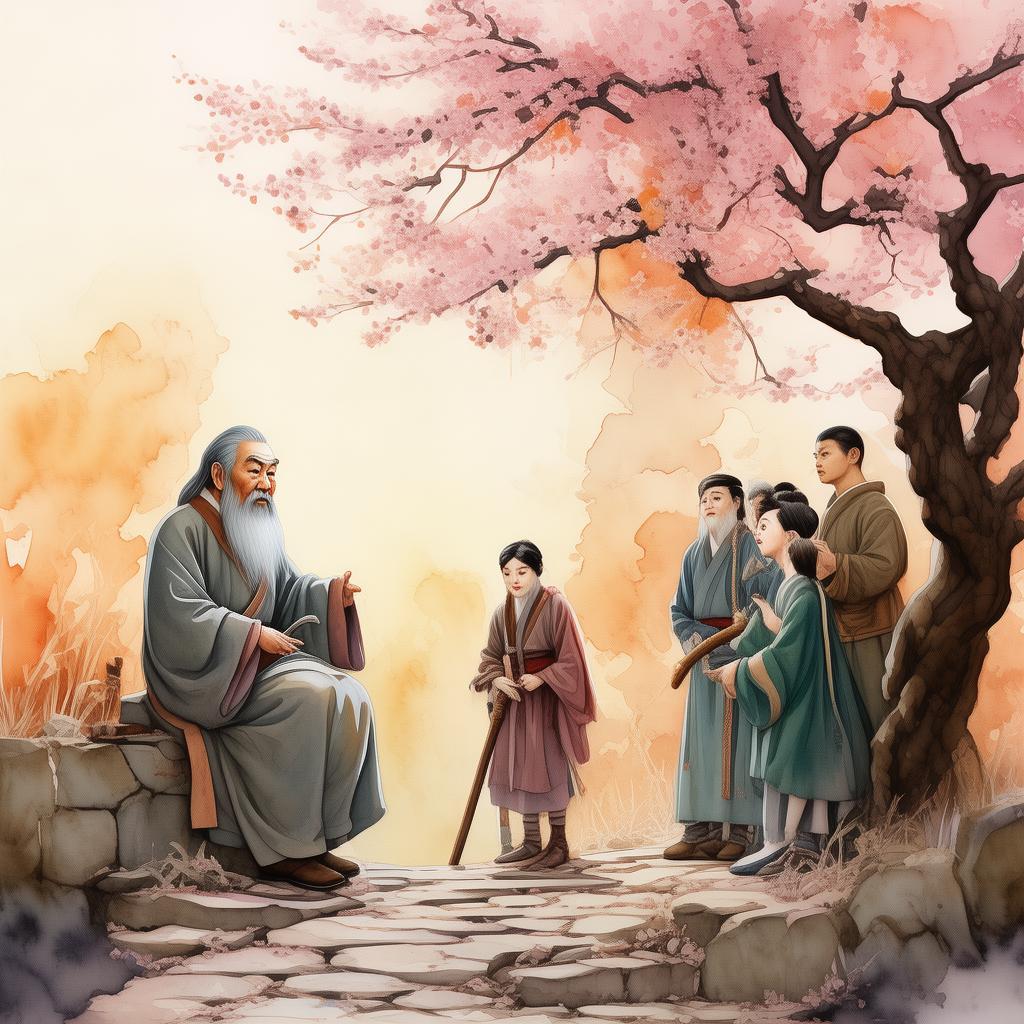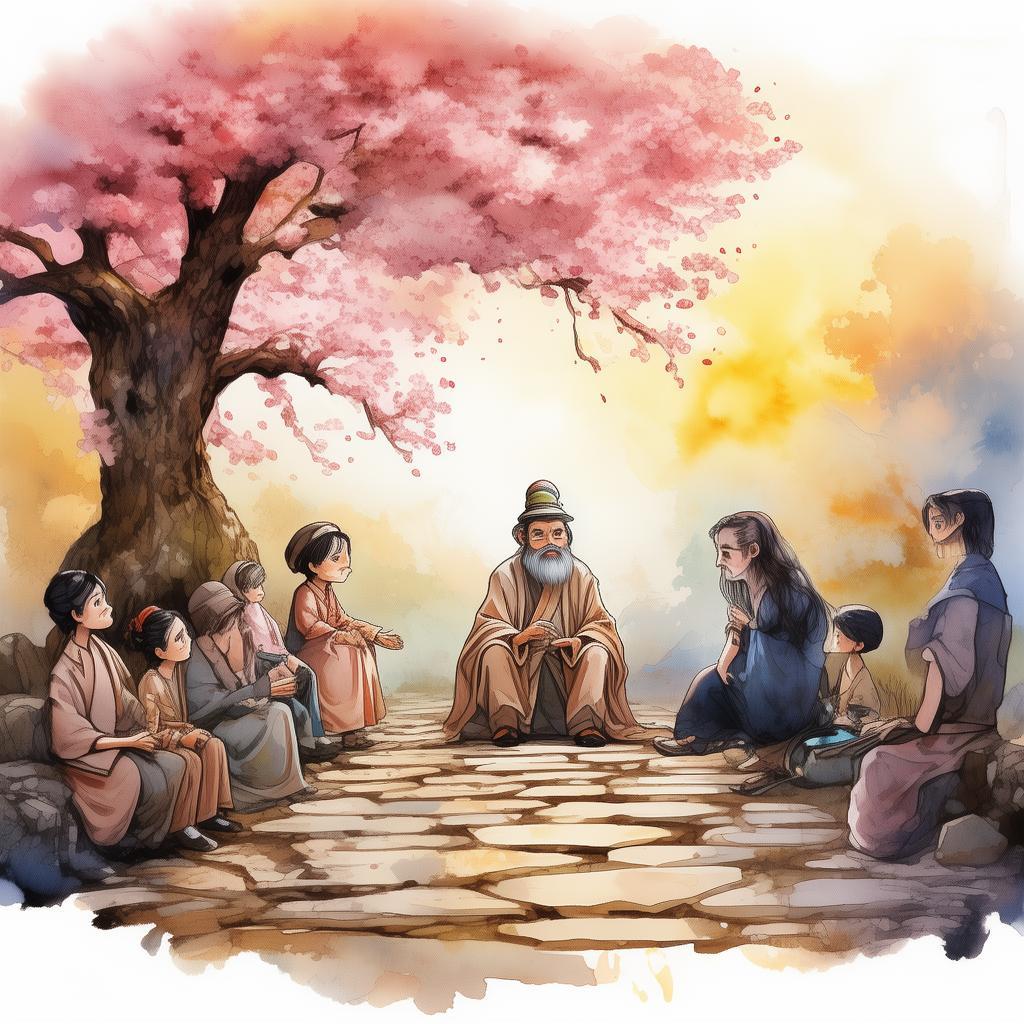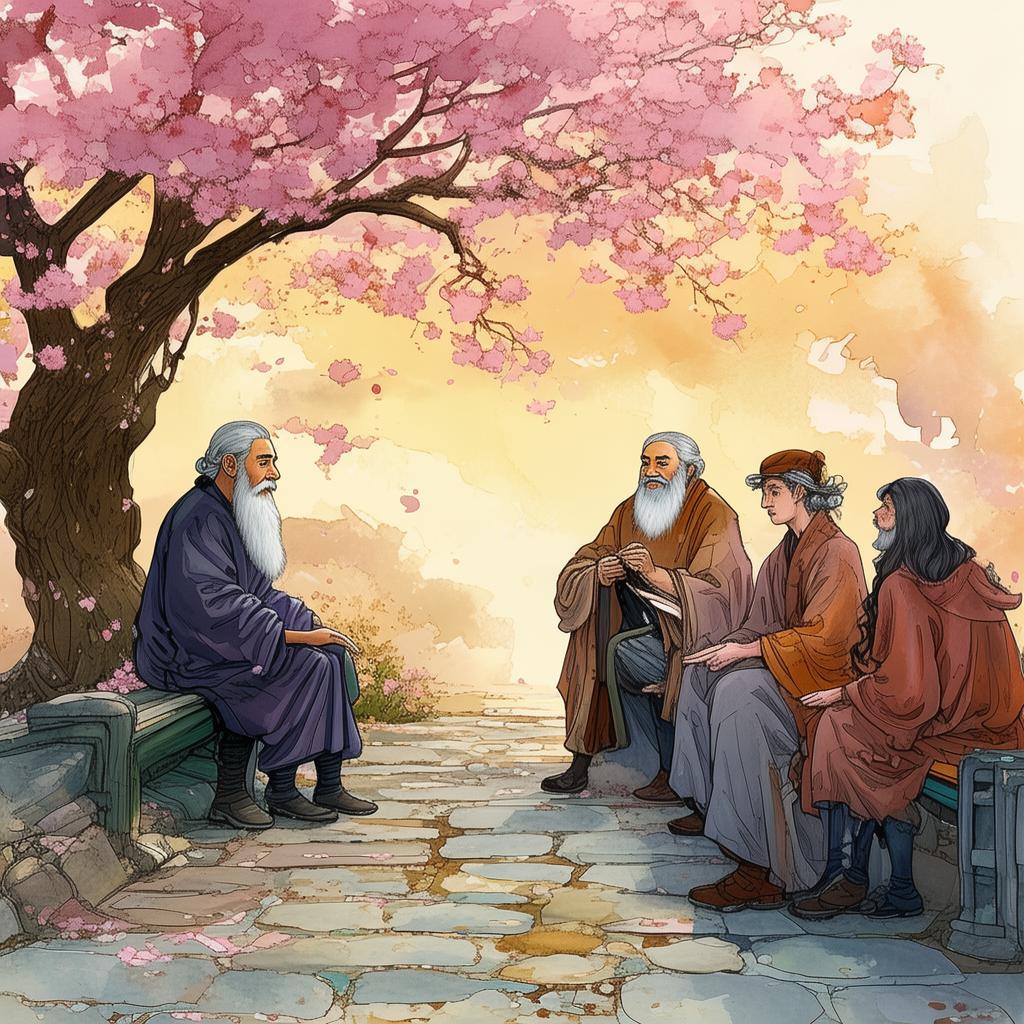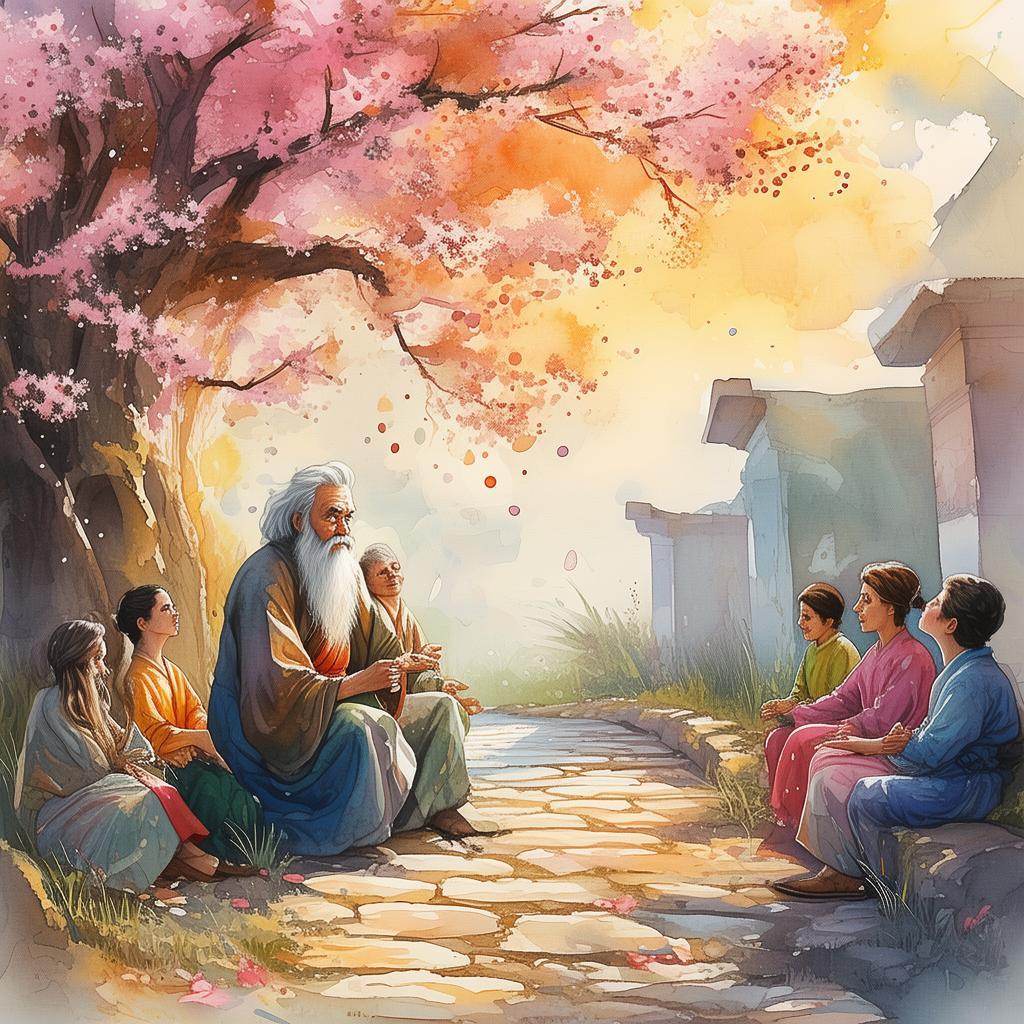The Art of Rebellion: A Chef's Culinary Conundrum
In the heart of a bustling city, where the scent of revolution filled the air, there lived a master chef named Liang. His restaurant, "Flavors of Freedom," was a beacon of hope and resistance, a place where revolutionaries gathered to plot their strategies and find solace in the warmth of his cuisine. The menu was a cryptic mix of familiar dishes and revolutionary recipes, each plate a silent testament to the struggle for change.
Liang's story began years before the revolution. A humble boy with a passion for cooking, he had watched as the ruling class indulged in their lavish feasts while the common people starved. Determined to use his talent for good, he sought out the revolutionary cause and found his place in the ranks of the resistance.
One evening, as Liang prepared a sumptuous feast for the leaders of the revolution, he was approached by a mysterious figure. The figure, a member of the secret council, whispered urgently about a plot to assassinate the ruler. The council needed someone with culinary skills to deliver a poison-laced dish to the enemy's table, a task that required the utmost precision and stealth.
Liang was torn. He had long since sworn to fight for the people, but the thought of poisoning another human being was abhorrent to him. However, the council's cause was just, and he knew the success of their mission could mean the end of the oppression that plagued his country.
As the night unfolded, Liang meticulously prepared the poison, his hands steady despite the turmoil in his heart. He then set about creating a dish that would not raise suspicion. The dish, a seemingly innocent and delicate dessert, was his masterpiece, a testament to his culinary artistry and his commitment to the cause.
The evening of the assassination, Liang entered the ruler's banquet hall with his dish. The atmosphere was one of celebration, but Liang's eyes scanned the room for any sign of the poison's effect. The ruler, a man of tasteless appetites, attacked the dessert with fervor, his face contorting in pleasure as he savored each bite.
Just as the ruler finished the last morsel, Liang's heart leaped. The poison was working! But as the ruler's face turned ashen, Liang's hopes were dashed. The ruler, sensing something was amiss, ordered the arrest of the entire room. In the chaos, Liang escaped, his mission botched and his conscience heavy.
Days passed, and the ruler's banquet hall became a place of sorrow and recrimination. Liang, now a fugitive, returned to his restaurant, his once vibrant establishment now a shadow of its former self. He realized that his actions, while well-intentioned, had backfired, and he had become an enemy of the people he sought to protect.

Determined to make amends, Liang began to use his culinary skills to support the revolution in other ways. He started to cook for the rebels, his food a source of strength and inspiration. He used his kitchen as a safe house, providing shelter and sustenance to those in need.
One day, as Liang prepared a meal for a group of rebels, he noticed a young girl, her eyes filled with fear and determination. She was a member of the resistance, tasked with delivering a message to the leader of the revolution. Liang, seeing her bravery, decided to help her.
Using his kitchen as a base, Liang concocted a special dish, a dish that would not only nourish the girl but also provide her with the strength and courage she needed to complete her mission. As the girl ate, her eyes lit up, and she departed, her heart filled with newfound resolve.
In the end, Liang's role in the revolution was not through direct action but through the power of his culinary art. He used his kitchen as a tool for change, his dishes as a means to feed both body and spirit. And so, in the midst of the revolution, a chef found his true calling, not as a revolutionary on the battlefield, but as a revolutionary in the heart of his country.
The Art of Rebellion: A Chef's Culinary Conundrum is a story of sacrifice, redemption, and the enduring power of the human spirit. It shows how even the smallest acts of kindness and resistance can have a profound impact on the course of history.
✨ Original Statement ✨
All articles published on this website (including but not limited to text, images, videos, and other content) are original or authorized for reposting and are protected by relevant laws. Without the explicit written permission of this website, no individual or organization may copy, modify, repost, or use the content for commercial purposes.
If you need to quote or cooperate, please contact this site for authorization. We reserve the right to pursue legal responsibility for any unauthorized use.
Hereby declared.
